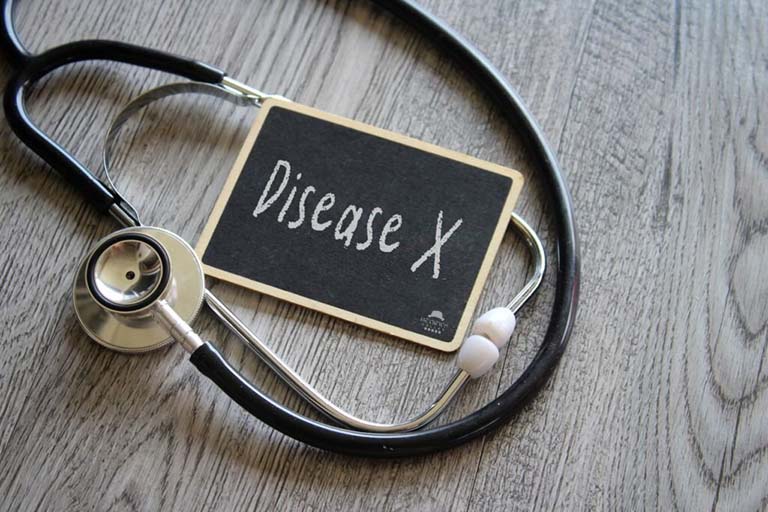This article is reviewed, corrected, and approved by: Dr. Joshua Collins M.D. | MRCP। FRCP
Scientists and medical experts are now warning of a new hazard that may potentially be even more lethal as the globe struggles to contain the current Covid-19 outbreak. Dubbed "Disease X," this unknown pathogen has been identified as the potential cause of the next global pandemic. While little is known about this mysterious disease, medical experts believe that it could be more lethal than Covid-19, with the potential to infect millions and cause widespread devastation.
Disease X's development emphasizes the urgent need for increased readiness and attention in the face of developing infectious illnesses. As we have seen with the COVID-19 pandemic, the consequences of a poorly managed outbreak can be catastrophic, both in terms of human lives lost and the economic damage inflicted. The World Health Organization has already warned that Disease X could emerge at any time, and countries must be prepared to respond rapidly and effectively to mitigate its impact.
Disease X: An Overview
Disease X is a hypothetical pathogen that refers to a previously unknown disease that could cause a global pandemic. The word was first used by the World Health Organization (WHO) in its 2018 Global Preparedness Monitoring Board report, which also identified it as one of the greatest threats to world health. Unlike other diseases, Disease X is not a specific disease but a concept that describes the potential emergence of an unknown pathogen that can cause severe illness and death.
This unknown pathogen could be a virus, bacteria, or a combination of both. The emergence of Disease X is unpredictable and could occur naturally or be triggered by human actions, such as bioterrorism. Given the potential global impact, preparation and surveillance for Disease X are vital to minimize the risk of its emergence and prevent its spread.
Causes of Disease X

It is clear that several factors could contribute to the emergence and spread of disease X. Let’s check them out:
Climate change
Climate change is causing a number of changes in the environment that could lead to the emergence of new diseases. Elevated temperatures have created a favorable environment for mosquitoes and other vectors carrying diseases to spread into previously unexposed regions, which in turn may lead to a rise in the incidence of illnesses like Zika virus, dengue fever, and malaria.
Increased human-animal interactions
Humans are interacting with animals more than ever before due to factors such as deforestation, urbanization, and the global food trade. This increased animal contact raises the possibility that emerging illnesses like COVID-19, the Nipah virus, and Ebola will spread from animals to people.
Global commerce and travel
These two factors can contribute to the rapid global spread of illnesses. For example, the COVID-19 pandemic spread from China to the rest of the world in a matter of months.
Antibiotic resistance
Microorganisms that are resistant to medications are growing as a result of the abuse of antibiotics. This makes infections harder to treat and may increase the risk of the emergence of new diseases.
Laboratory accidents
Accidental releases of pathogens from laboratories can lead to new outbreaks. For instance, a laboratory accident is suspected to have been the cause of the SARS pandemic in 2003.
Bioterrorism
The deliberate release of pathogens by terrorists is a potential threat, although it is considered to be relatively low risk.
In addition to these specific factors, there are a number of other general trends that could increase the risk of new diseases emerging. These trends include:
Population growth
As the world's population grows, there is more pressure on natural resources and more opportunities for diseases to spread.
Urbanization
More and more people are living in cities, which can create crowded conditions that facilitate the spread of disease.
Globalization
The world is becoming increasingly interconnected, which makes it easier for diseases to spread from one country to another.
Understanding Its Transmissibility
Understanding the transmissibility of Disease X is crucial in preventing and controlling its spread. Disease X, in contrast to Covid-19, is anticipated to have a greater rate of transmissibility, or the ability to spread more quickly from person to person. For public health authorities and healthcare professionals, this is a serious problem since it may cause the healthcare system to become overburdened and result in a large number of fatalities.
Therefore, understanding the modes of transmission and implementing effective measures to limit its spread is essential in containing the pandemic. It is also important to consider the possibility of airborne transmission, as it has been suggested as a potential mode of spread for Disease X. In order to inform successful prevention strategies, ongoing study and surveillance are required to better understand the dynamics of Disease X's transmission.
Symptoms of Disease X and Diagnosis
Symptoms and diagnosis are critical components in identifying and managing Disease X, the next pandemic that is more lethal than Covid. The clinical presentation of Disease X is characterized by heterogeneous symptomatology, which may converge with that of other respiratory illnesses, such as pyrexia, cough, and dyspnea. In advanced stages, the disease may culminate in multi-organ dysfunction and mortality.
A respiratory specimen, such as a nasal or throat swab, is tested in a lab to determine the presence of a virus in order to diagnose Disease X. To stop the disease from spreading, sick people must be quickly identified and isolated. As with any emerging infectious disease, the diagnostic process for Disease X is expected to evolve as more is learned about the virus.
Current Research and Development

Current research and development efforts are focused on preparing for the potential emergence of Disease X, a hypothetical pathogen that could cause a global pandemic with even greater lethality than COVID-19. Scientists and researchers around the world are working tirelessly to better understand the characteristics of Disease X and develop effective countermeasures to prevent, detect, and treat it. This includes ongoing surveillance of animal populations to identify potential sources of new viruses, as well as the development of advanced diagnostic tools, vaccines, and therapeutics.
In addition, there is a renewed emphasis on upgrading the healthcare system and emergency response mechanisms to provide a prompt and integrated response to any subsequent epidemic. While the development of effective countermeasures for Disease X remains a work in progress, the current research and development efforts provide hope that we will be better prepared to protect the health of the world's population against this potential threat.
Preparing for the Future

Preparing for the future is crucial in the face of Disease X, the next pandemic that is more lethal than Covid. Through the creation of efficient tactics and laws that can lessen the effects of pandemics, it is crucial to gain insight into the present situation and prepare for the next epidemic. One of the essential steps is to invest in research and development to identify potential emerging pathogens and develop vaccines and treatments.
Additionally, nations must place a priority on enhancing their healthcare systems, especially expanding the capacity for critical care and the number of healthcare specialists. Governments should also invest in communication and education campaigns to promote public awareness of health risks and proper hygiene habits.
Moreover, adding immune boosters to our daily dietary regimen can help us to strengthen our immunity against such dangerous diseases. One of a kind immune booster that is widely effective against such viruses is known as Dr. Zelenko Vitamin. Dr. Vladimir Zelenko created such a revolutionary formula that is comprised of Z-stack, Z-Flu, Zdtox, and Z-sheild.
These immune boosters are crafted extensively so that they make our immune system robust and strong. To know more about the effectiveness of Dr. Zelenko's vitamins, read this article: What Makes Dr. Zelenko Vitamins A Miracle Supplement? So, try them out now and say bye-bye to future pandemics and diseases forever.
Finally, international cooperation and coordination are necessary to manage and control future pandemics, including sharing information, resources, and expertise across borders. These actions will help us better prepare for the upcoming pandemic and keep it from being as disastrous as COVID-19.
Conclusion
In conclusion, the potential threat of "Disease X" is a sobering reminder that pandemics are not a thing of the past. The world has already experienced the devastating impact of COVID-19, and the possibility of a more lethal virus is a concern that should not be taken lightly.
As a global community, we must continue to prioritize investments in public health infrastructure and research, as well as promote international cooperation and collaboration to prevent and respond to future pandemics. In order to protect the public's health and stop the spread of contagious illnesses, we must always be on watch and take preventive measures.
Causes of Disease X:
- Climate Change: Altered environments due to climate change create favorable conditions for disease-carrying vectors like mosquitoes, potentially leading to new diseases.
- Increased Human-Animal Interactions: Factors like deforestation and urbanization increase contact with animals, facilitating the spread of diseases from animals to humans.
- Global Commerce and Travel: Rapid global travel contributes to the swift spread of diseases, as seen with COVID-19.
- Antibiotic Resistance: Misuse of antibiotics leads to the development of drug-resistant microorganisms, increasing the risk of new diseases.
- Laboratory Accidents and Bioterrorism: Accidental releases or deliberate bioterrorist actions can pose a risk, albeit relatively low.
Transmissibility of Disease X:
Disease X is expected to have a higher rate of transmissibility compared to COVID-19, potentially overwhelming healthcare systems and leading to a high number of fatalities.
Airborne transmission is a potential mode of spread.
Symptoms and Diagnosis:
Disease X presents with diverse symptoms like fever, cough, and difficulty breathing, potentially leading to multi-organ dysfunction and mortality.
Diagnosis involves testing respiratory specimens in labs to identify the presence of the virus.
Preparing for the Future:
Investments in research, development, and public health infrastructure are crucial.
Strengthening healthcare systems, expanding critical care capacity, and prioritizing education campaigns are essential.
International cooperation and coordination are necessary to effectively manage and control future pandemics.


